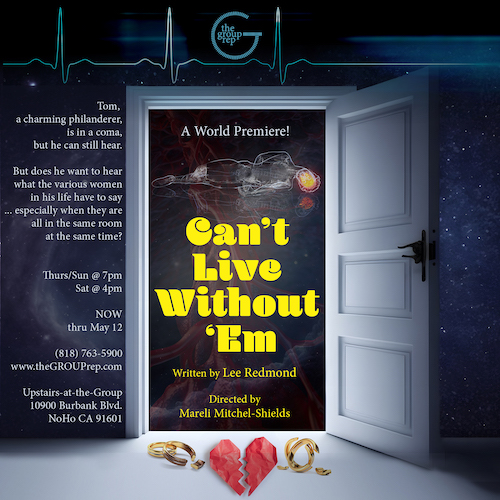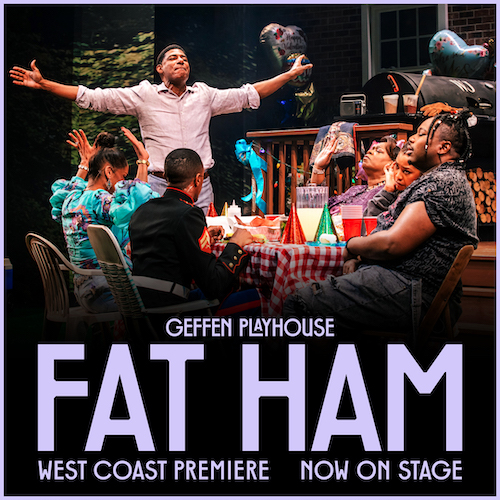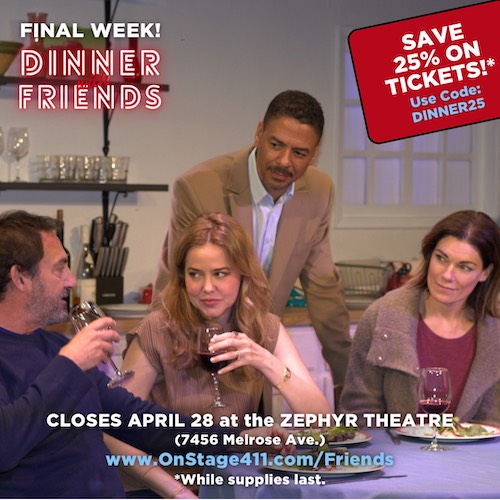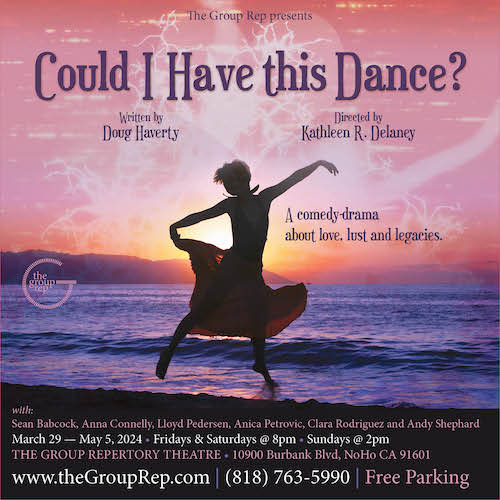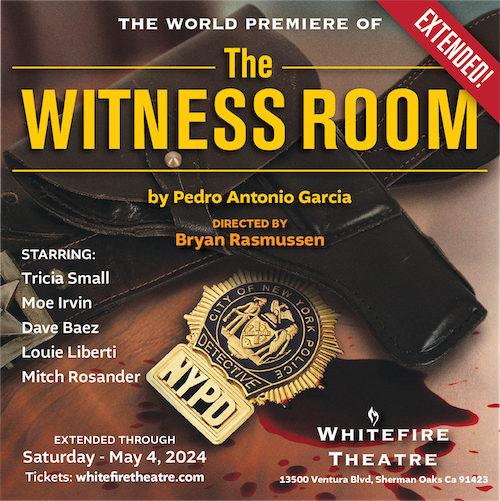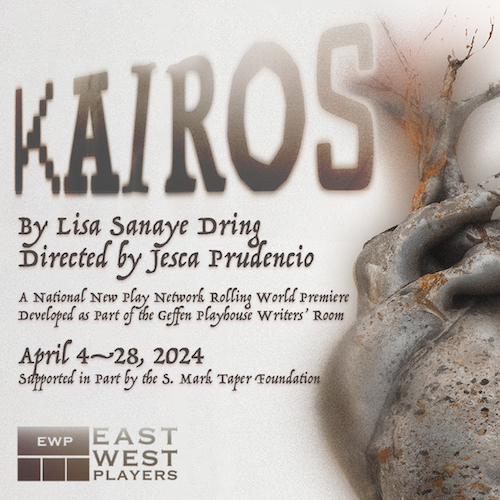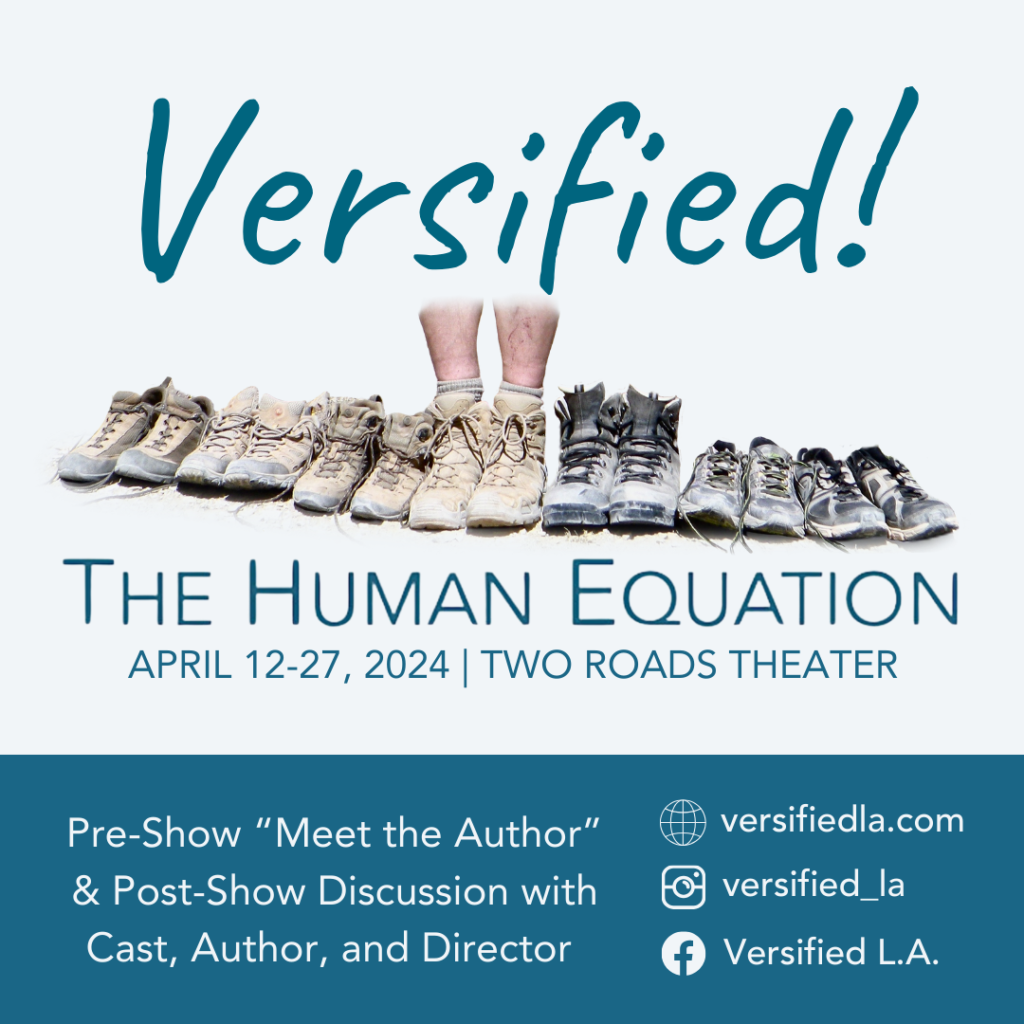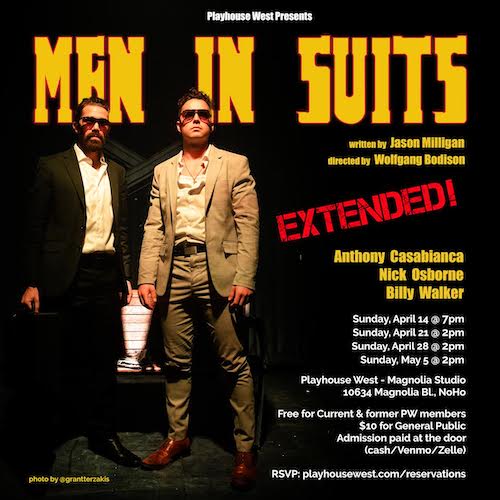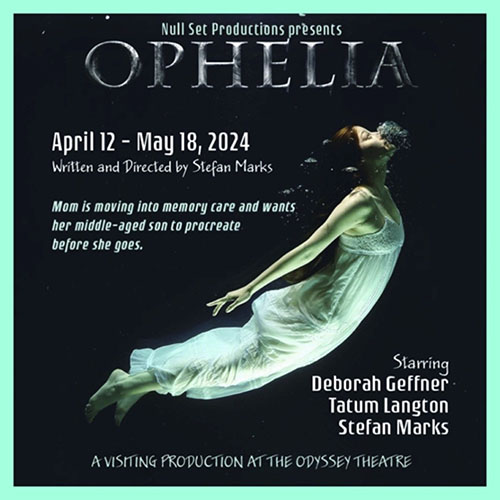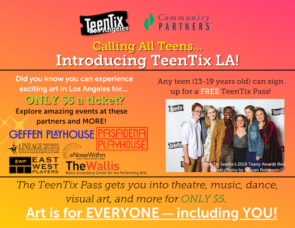
Why Theater is Essential for a Young Therapist-in-Training
By Taylor Kass
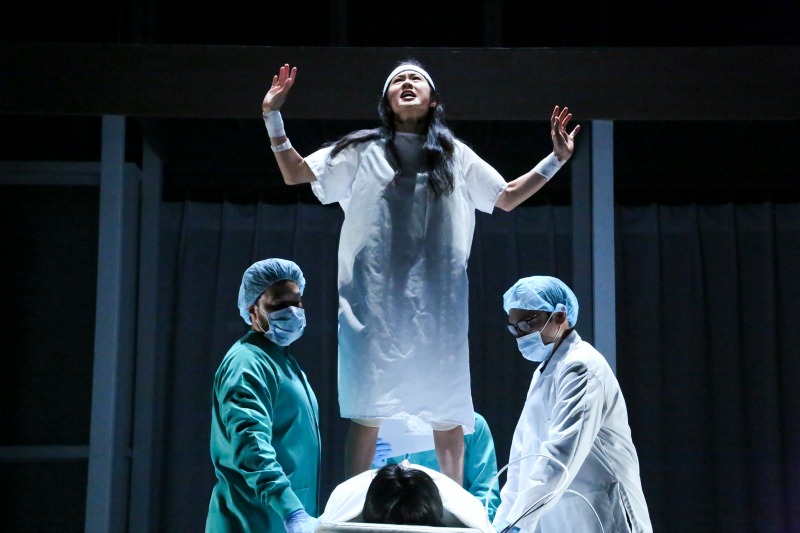
Cliffton Hall, Deedee Magno Hall and Randy Guiaya in Next to Normal at East West Players (Photo by Michael Lamont)
This essay is provided in partnership The Unusual Suspects Theatre Company, which commissioned Stage Raw to write and edit a series of articles for its print magazine, Devise, to be distributed at theaters region-wide.
When I attend theater productions in Los Angeles, it’s not an uncommon experience for me to be the youngest member of the audience. Much of the time, the only reason I can afford to be in the audience at all is because I’m reviewing the production. I graduated from USC’s School of Dramatic Arts in 2020, but many of my peers don’t see live theater as much as they’d like. Most theater companies, both locally and nationwide, are bothered that their audience demographics skew much older and many make concerted efforts to engage young people in their programming. But it’s rare to come across a teenager, college student, or individual in their early 20s with the disposable income for a Broadway ticket that can cost hundreds or a production in Los Angeles that charges double the price of a movie ticket.
In the absence of sufficient government funding and in a bleak artistic landscape still recovering from the Pandemic’s financial devastation, theaters are forced to cater to audience members that can afford to consistently pay full price for tickets so it’s no surprise that those older audiences usually win out, leaving a tragic dearth of plays and musicals written about young people for young audiences. And these young audiences need to see their experiences, dreams and fears represented onstage the most.
I grew up listening to pop-rock musicalsthat portrayed coming-of-age stories in an unflinching and electrifying way. Duncan Sheik and Steven Sater’s 2007 Tony Award-winning musical Spring Awakening, based on the 1891 play of the same name by Frank Wedekind, is a teenage maelstrom of trauma and nascent sexuality in turn of the century Germany. Naïve teenager Wendla is impregnated by angsty schoolboy Melchior without even knowing how babies are made. Meanwhile, Martha struggles silently as her father abuses her and Moritz sees suicide as the only way out of an anxiety-ridden life. Yet underneath the repression specific to this society lies an evergreen thread of relatability accentuated perfectly by the angsty pop rock score. Growing up can feel “Totally Fucked” – you feel like a stranger in your own body and you grapple with yearnings you can’t name. And worst of all, it feels like you’re alone in your experience and that no one is as confused as you. When the ensemble comes together to rage against the adults that have failed them, Spring Awakening shatters that feeling of isolation.
Next to Normal, which premiered on Broadway in 2009, dramatizes psychology, psychiatry, and the effects of mental illness more specifically. The Goodmans are “the perfect loving family,” except for one huge problem: Gabe, the family’s teenage son, is actually a figment of mom Diana’s imagination. Gabe passed away as a baby but his grown-up form haunts Diana as an entity somewhere between a ghost and a hallucination. While Diana suffers most severely, her mental illness colors every aspect of the family’s life. Dad Dan and teenage daughter Natalie try their best to support Diana through a series of numbing psychiatric drugs and electroconvulsive therapy, but nothing seems to eradicate Diana’s deep-seated grief and they realize that “some hurts never heal.”
The Goodmans’ sole surviving child Natalie is entirely marginalized by the memory of her brother; no matter how good her grades are or how perfect her piano playing is, she can never seem to measure up to his absence. With a distracted mother and a father consumed with caretaking, Natalie clumsily navigates adolescence, academic pressure, first love, substance use, and her own mental health challenges mostly on her own. And even though Gabe is not entirely real, his main goal is to prove that he is. Just like any other teenager, Gabe just wants to be seen.
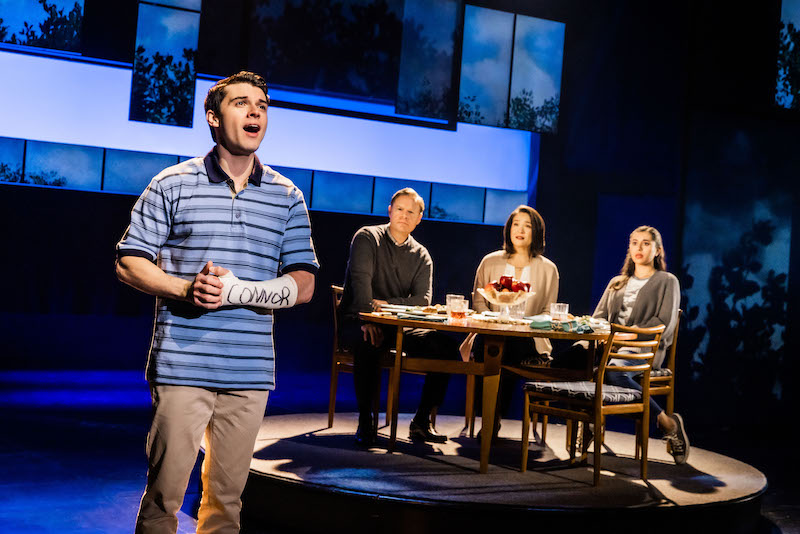
Anthony Norman, John Hemphill, Lili Thomas and Alaina Anderson in Dear Evan Hansen at the Ahmanson Theatre (Photo by Evan Zimmerman for MurphyMade)
With Dear Evan Hansen’s Broadway premiere in 2016, teen stories were catapulted into the digital age. Evan is a high school student battling a debilitating case of social anxiety disorder and healing from a not-so-accidental fall from a tree. After his classmate Connor commits suicide, Evan is mistakenly identified as the boy’s only friend. But rather than correct the error, Evan allows the little white lie to snowball until his speech in honor of Connor goes viral online. Later, Evan’s lies are exposed and his budding friendship with Connor’s family is soured. But even though Evan’s interpersonal relationships are greatly damaged by the lie, it’s Evan casting himself as the internet’s mental health champion that’s particularly disturbing. Evan shares the same desire to be witnessed in his pain as the teen characters from Spring Awakening and Next to Normal do. But with the power of the internet, Evan takes it a step further and to a wider audience. Evan doesn’t just want to be understood. He wants to be known.
But with great virality comes great responsibility. In 2020, the COVID-19 Pandemic plus the Black Lives Matter movement plus a lot of extra time online created the perfect recipe for the rise of the Instagram infographic: an aesthetically pleasing block of text on a colorful background that might offer helpful information about an important current event or provide resources for mutual aid. But in 2023, it also might diagnose you with an anxiety disorder, relationship OCD, an avoidant attachment style, ADHD, a toxic boyfriend, a narcissistic parent, capitalist burnout, or all of the above. These labels can accomplish something akin to watching our experiences play out onstage: they make us feel less alone. With so many ways to describe what we’re going through, it can feel like we need to pick at least one label that fits us the best. How else will our experiences be valid in the eyes of our peers, our families, and our followers?
Pop psychology is a double-edged sword. This phenomenon refers to all of the commonly accepted theories of psychology that have trickled down into the mainstream and into our daily understanding of human minds and behavior. If you’ve ever taken a quiz about your love language, labeled an awkward comment a Freudian slip, or watched Dr. Phil dispense advice on TV, you know the drill. Demystifying and normalizing mental health knowledge allows folks without a psych degree to take charge of their own mental health and advocate for themselves in a healthcare system that is frequently utterly dismissive.
But oversimplification and misapplication of psychological theories and research have the potential to cause harm, especially to young people. Maybe it’s just my personal For You page, but every scrolling session on TikTok uncovers at least one video, either from a licensed mental health professional or an armchair analyst, listing symptoms for a disorder that the algorithm thinks I have. An overabundance of advice from an infinite number of credible and non-credible sources also has the potential to damage interpersonal relationships. You’re probably thinking of that friend right now – the one who peppers “therapy-speak” into every conversation. This friend’s ex wasn’t just uninterested – they were emotionally unavailable, toxic, and narcissistic. This friend wants to let you know that in order to respect their boundaries, you need to respond to their texts within 30 minutes. It’s not their fault that lack of communication triggers them; they have an anxious attachment style.
It’s not just self-diagnosing that’s on the rise – it’s formal diagnosing by mental health professionals too. In most cases, therapists need to provide a diagnostic code in order to bill a therapy session to their client’s insurance. For this purpose, therapists consult the Diagnostic and Statistical Manual of Mental Disorders, Fifth Edition. This manual, referred to as the DSM-5, is published by the American Psychiatric Association and has changed significantly since the first edition came out in 1952. New disorders are added, old disorders (such as homosexuality) are removed and are no longer considered disordered, symptoms are clarified, and the sections are re-organized to reflect similarities between disorders. But what does the therapist do when they believe that a client may not check off all of the criteria for a diagnosable disorder but could still benefit from therapy? This ethical dilemma is one that mental health professionals face every day. And although providers and consumers have the same goal of making mental healthcare accessible and affordable, it’s still only the privileged few who can afford to pay out of pocket for therapy that bypasses insurance and mandatory diagnoses.
Having language to describe what we’re going through- in the form of a formal diagnosis or not- can make us feel less alone but it can also lead to the pathologizing of normal human experiences. For example, Next to Normal’sDiana Goodman fits all of the criteria to be diagnosed with prolonged grief disorder, characterized by symptoms including intense emotional pain, emotional numbness, and denial about the loved one’s death. The disorder is also described as a period of grief that lasts longer than normal. But, as the musical questions, what is normal and who decides? Is a mental health professional in charge of determining what level of grief is functional? Or should the individual seeking treatment set their own goals?
Carl Rogers, one of the most influential psychotherapists of the 20th century, developed a new humanistic theory of psychology that sought to understand individuals through their own perspective. This person-centered theory positioned the client as the authority on their own life. The therapist in this theoretical framework, a far cry from Sigmund Freud’s all-knowing expert, became an equal in the therapeutic journey and facilitated the client’s self-exploration and self-actualization. Rogers’ ideas formed the basis for much of contemporary psychotherapy and stressed the importance of the therapeutic relationship between therapist and client. The therapist must display what Rogers called “unconditional positive regard,” or the ability to remain non-judgmental and empathetic no matter what the client says. In a world that has very few truly safe spaces, the therapy room becomes a place where the client can pursue authenticity in a judgment-free, completely confidential manner.
As an acting major at USC, my undergraduate studies were more about memorizing lines than memorizing diagnostic criteria. As a current graduate student at Pepperdine University pursuing a master’s degree in Clinical Psychology, many skills I learned in the theater are applicable to my training towards licensure as a Marriage and Family Therapist. That deep sense of empathy that makes Rogers’ unconditional positive regard possible was cultivated in the theater. Playing characters that I deeply disliked challenged me to find the humanity in everyone. Dissecting dialogue in a play taught me to be a careful and close listener. Watching shows about a wide variety of subjects, from various time periods, from diverse playwrights, and from different perspectives allows me to access a greater depth and breadth of emotion than I could unlock on my own.
The Greeks looked to the theater for catharsis: a state of purification by way of emotional purging. Tragedies in particular allowed theater-goers to empathize with the most potent dramatized pain. Therapy also provides catharsis in the practice of unearthing buried trauma and repressed emotions. Confronting that pain is scary, but it always feels a little lighter after being brought to light. While catharsis can be understood as a step on the way to self-actualization, I think an essential component of catharsis is experiencing it in the presence of another human being. Theater allows us the opportunity to connect to the collective through the shared emotional experience of witnessing characters’ pain, fear, and joy. Therapy, whether it’s in a group or in one-on-one individual therapy, allows us the opportunity for our own pain, fear, and joy to be witnessed. Witnessing and being witnessed are two equally essential parts of being human.
Do I think we need more plays explicitly about mental illness? Yes and no. Telling nuanced stories about the human experience will inherently include depictions of mental illness and of the struggles we all share. Are plays written before the time of Freud less true or relevant because they weren’t written with today’s understanding of mental illness?Absolutely not. Diagnoses can make a world of difference to clients who gain context for their symptoms for the first time, but psychology is a constantly-developing field and our understanding of mental disorders is continuously evolving.
That’s why seeing our stories onstage is so essential for our development as deeply engaged young people. Spring Awakening, Next to Normal, and Dear Evan Hansen swept the Tony Awards in the years that they were nominated and became staples of the contemporary musical theater canon. When theater-makers invest in stories about young people and the issues important to us, it pays off both artistically and financially. Additionally, making sure that programming is accessible and affordable ensures that young people from every background get the opportunity to know themselves more deeply. Our understanding of mental health and the language we use to talk about it is always changing, but the human experience and the stories we tell about it are evergreen.




